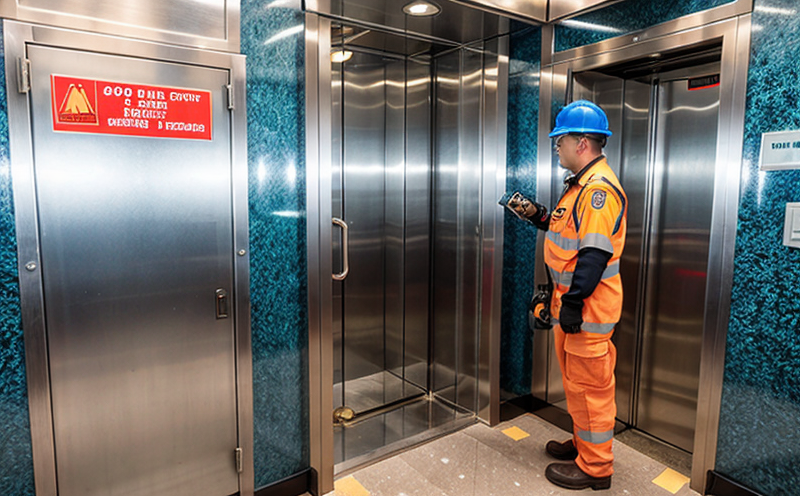Elevator safety gear inspection
Ensuring elevator and escalator safety is paramount in high-rise buildings where millions of people rely on these systems daily. Elevator safety gear plays a critical role in the safe operation of elevators, including components like emergency braking devices, safety catches, governor mechanisms, and counterweights. These safety features are designed to protect passengers from accidents such as free-fall or over-speed conditions.
The inspection of elevator safety gear involves thorough evaluations to ensure that all critical components meet the latest industry standards and regulatory requirements. This process typically includes visual inspections, functional tests, and performance checks under various operating conditions. Inspectors use specialized tools and equipment to measure wear and tear, check for corrosion or damage, and verify that all systems operate within specified limits.
One of the most critical aspects of this inspection is the governor mechanism test. This test ensures that when the elevator exceeds its safe speed, the governor activates the safety catch, bringing the car to a stop safely. The test involves subjecting the system to specific load conditions and measuring the response time, ensuring it adheres to standards such as ASME A17.1.
Counterweight inspection is also crucial, as it helps maintain balance during operation. Inspectors check for proper alignment and ensure that the counterweights are not corroded or damaged. This ensures efficient energy consumption and safe operation of the elevator. Additionally, safety catches are inspected to confirm they can hold back the car in case of a failure.
The inspection process also involves checking emergency braking devices to ensure they function correctly under various scenarios. This includes testing during free-fall conditions to verify that the brakes engage effectively and safely. Compliance with standards like EN 81-20 ensures that all systems are up-to-date and meet safety requirements.
In addition to mechanical inspections, electronic components such as control panels and sensors are also evaluated for proper functionality. These components ensure that the elevator operates smoothly and safely under all conditions. Regular maintenance and inspections help prevent malfunctions and potential accidents, contributing significantly to public safety.
Moreover, the inspection process includes assessing the environmental impact of these systems over their lifecycle. By ensuring efficient operation through regular servicing, the lifespan of elevator components can be extended, reducing waste and resource consumption. This contributes to sustainability efforts by minimizing the need for frequent replacements and repairs.
Why It Matters
The importance of elevator safety gear inspection cannot be overstated. Elevators are a vital part of modern urban infrastructure, providing essential mobility for people in densely populated areas. Ensuring the integrity and functionality of these systems is critical to maintaining public safety.
Regular inspections help identify potential hazards before they become critical issues. By catching minor problems early on, inspectors can prevent more severe accidents that could result in injuries or fatalities. Compliance with international standards such as ASME A17.1 ensures that all safety measures are up-to-date and meet the highest industry benchmarks.
The economic impact of elevator downtime due to failures is substantial. Inefficiencies caused by breakdowns can lead to lost productivity, increased maintenance costs, and potential legal liabilities for building owners and operators. By adhering to a rigorous inspection schedule, these risks are minimized, ensuring continuous operation and reducing the likelihood of costly disruptions.
From an environmental perspective, efficient elevator systems contribute positively to sustainability goals. Properly maintained elevators use less energy, leading to reduced carbon footprints and lower operational costs for building owners. This aligns with broader corporate social responsibility initiatives focused on green practices and responsible resource management.
Environmental and Sustainability Contributions
- Elevators that are well-maintained consume less energy, reducing the overall carbon footprint of buildings.
- Regular inspections help extend the lifespan of elevator components, minimizing waste generation and resource depletion.
- By ensuring safe operation, inspections prevent accidents that could lead to increased medical costs and potential legal expenses for building owners.
Competitive Advantage and Market Impact
In the competitive market of building maintenance and safety services, a strong reputation for providing top-notch elevator safety gear inspections is crucial. Clients trust companies that demonstrate expertise in this area, leading to long-term business relationships and increased customer satisfaction.
Meeting or exceeding international standards like ASME A17.1 not only enhances the credibility of service providers but also differentiates them from competitors who may not adhere to these stringent guidelines. This can lead to higher demand for their services due to perceived reliability and safety.
The ability to offer comprehensive inspection reports that detail every aspect of elevator operation helps clients make informed decisions about necessary repairs or upgrades. This transparency fosters trust between service providers and building management, creating a win-win scenario where both parties benefit from the improved condition of the elevators.





